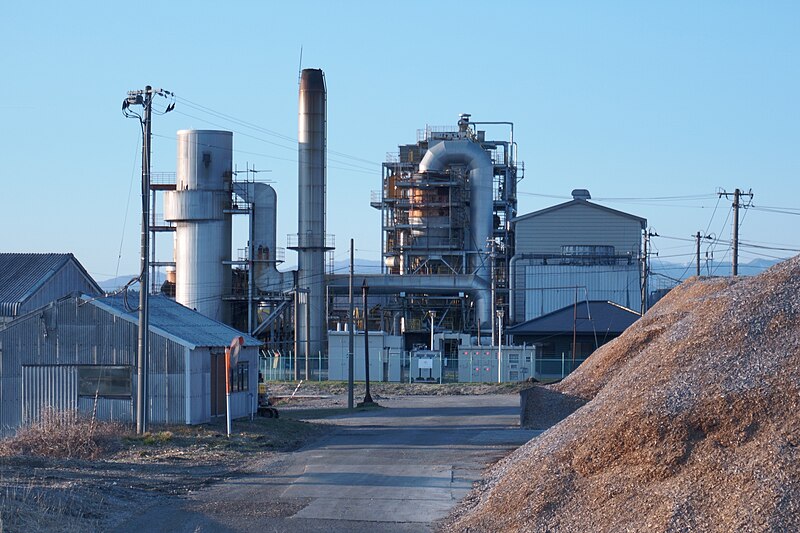Namibia, known for its vast deserts, rugged landscapes, and rich biodiversity, is making waves in the global environmental space. One of the most exciting developments in the country’s renewable energy sector is the rise of the biomass industry. As the world pivots towards cleaner energy sources, Namibia is positioning itself as a key player in the green revolution, utilizing its vast natural resources to create sustainable energy solutions that not only address local energy needs but also have the potential for global export.
What is Biomass Energy?
Biomass energy refers to the use of organic materials, such as plants, wood, agricultural residues, and even waste from animals, to generate heat or electricity. Unlike fossil fuels, biomass is considered renewable and environmentally friendly, as it can be replenished naturally over time. Biomass energy can be harnessed through a variety of methods, including direct combustion, fermentation, and conversion into biofuels, making it a versatile energy source.
In Namibia, the most common biomass feedstocks include wood, crop residues, and invasive plant species, many of which are abundant in the country’s semi-arid environment. This provides Namibia with a unique opportunity to transform natural waste into valuable energy while addressing critical environmental issues.
The Growing Biomass Sector in Namibia
Namibia’s biomass industry is experiencing rapid growth due to a combination of favorable geographic conditions, governmental support, and the increasing global demand for renewable energy. The country is already taking steps to develop its biomass capabilities in a way that complements both its environmental and economic goals.
- Reducing Wildfire Risks:
One of the biggest environmental benefits of Namibia’s biomass industry is its potential to mitigate the risks posed by wildfires. Invasive plant species, such as the encroaching Prosopis (mesquite), have been causing environmental havoc by consuming large amounts of water, outcompeting native vegetation, and contributing to fire hazards. By converting these invasive plants into biomass for energy production, Namibia can effectively manage these plant populations while turning a problem into a resource.
- Promoting Rural Development:
The biomass sector is also proving to be a catalyst for rural development in Namibia. Many biomass plants are being established in rural areas, where the supply of raw materials such as wood and agricultural waste is abundant. These plants create jobs in communities that traditionally have limited access to other forms of employment, helping to improve the livelihoods of rural populations. Moreover, the sector is driving innovation in agricultural practices, as farmers can diversify their crops and include biomass feedstocks to meet both food and energy demands.
- Reducing Namibia’s Energy Deficit:
Namibia faces an energy deficit, with its power supply largely reliant on imports from neighboring countries. The biomass sector presents a solution to this issue by providing a localized, renewable energy source that can reduce Namibia’s dependence on foreign energy supplies. Small and medium-scale biomass power plants have already been established to serve local communities, and there are plans to expand these operations, contributing to the country’s energy independence.
- Environmental Sustainability:
One of the driving forces behind Namibia’s push towards biomass energy is the need to adopt more sustainable practices in the wake of climate change. Namibia’s climate is characterized by extreme droughts, which exacerbate water scarcity and hinder agricultural productivity. Biomass production, when managed sustainably, has the potential to be a water-efficient alternative to other agricultural practices. Additionally, biomass energy can reduce carbon emissions, as it is considered carbon-neutral, meaning the amount of carbon released during its combustion is roughly equivalent to the amount absorbed during the growth of the plants.
Government Support and Policy Framework
Namibia’s government recognizes the potential of biomass as part of its broader strategy for renewable energy and environmental sustainability. The government has integrated biomass energy into its National Renewable Energy Policy, which aims to increase the share of renewables in Namibia’s energy mix. Key incentives for the growth of the biomass sector include tax relief for renewable energy projects, favorable financing for green energy initiatives, and regulatory support to attract both local and international investors.
The government has also made strides in developing biomass technology infrastructure, such as bioenergy research and development centers and partnerships with international organizations. These collaborations are critical to establishing the technical know-how and industry standards needed to maximize biomass potential while minimizing environmental impact.
Challenges and the Road Ahead
Despite the promising growth, Namibia’s biomass industry faces challenges that need to be addressed for long-term success. One of the major hurdles is the logistics of collecting, processing, and transporting raw biomass materials. Rural areas may lack the infrastructure needed for efficient biomass collection, and transportation costs can be prohibitive. Additionally, there are concerns regarding the potential impact of large-scale biomass production on land use and food security, which must be carefully managed to avoid unintended negative consequences.
To address these challenges, Namibia’s biomass industry will need continued investment in infrastructure, technology, and training. The government must also work closely with local communities to ensure that biomass projects are designed to be socially and environmentally sustainable.
Global Implications and the Future of Biomass in Namibia
Namibia’s emerging biomass sector not only holds promise for the country but also has significant implications for global sustainability efforts. As the world looks for renewable alternatives to fossil fuels, Namibia is positioning itself as an exporter of biomass-based energy products, such as wood pellets and biofuels, particularly to markets in Europe and Asia. The country’s abundant natural resources, combined with its commitment to environmental stewardship, make it an attractive partner for green energy collaborations.
Moreover, Namibia’s success in biomass energy could inspire other African nations with similar environmental challenges to adopt biomass solutions. The model being established in Namibia is scalable and adaptable, offering a blueprint for other regions seeking to harness their natural resources in a sustainable and economically viable manner.
Namibia’s rise as a leader in the biomass energy industry is a testament to its innovative approach to solving complex environmental and energy challenges. By harnessing the power of its natural resources, promoting sustainable practices, and investing in rural development, Namibia is laying the groundwork for a greener, more energy-secure future. As the country continues to expand its biomass industry, it will not only benefit from a more sustainable energy mix but also contribute to the global fight against climate change and environmental degradation.
Join 'Namibia Today' WhatsApp Channel
Get the breaking news in Namibia — direct to your WhatsApp.
CLICK HERE TO JOIN











